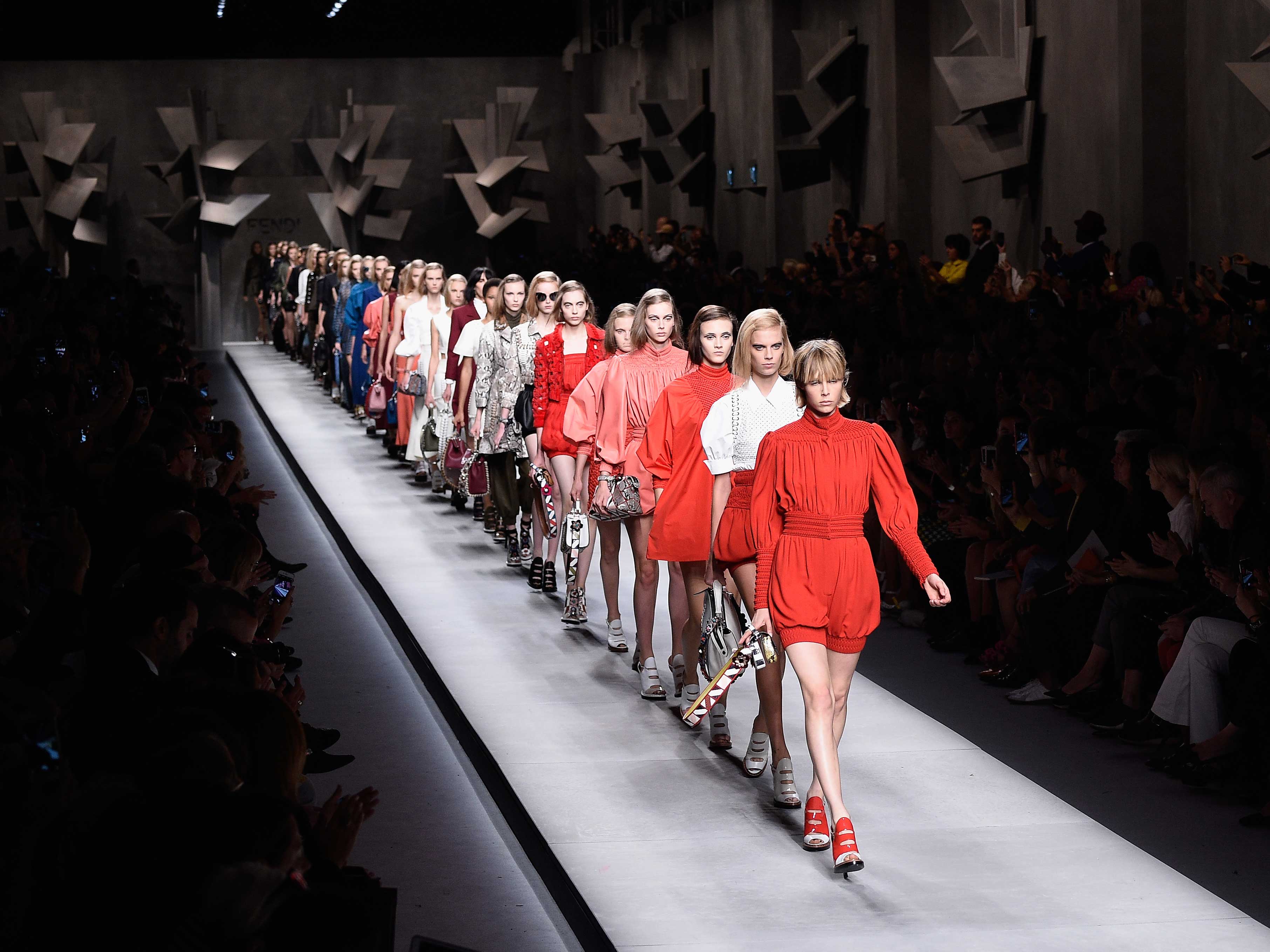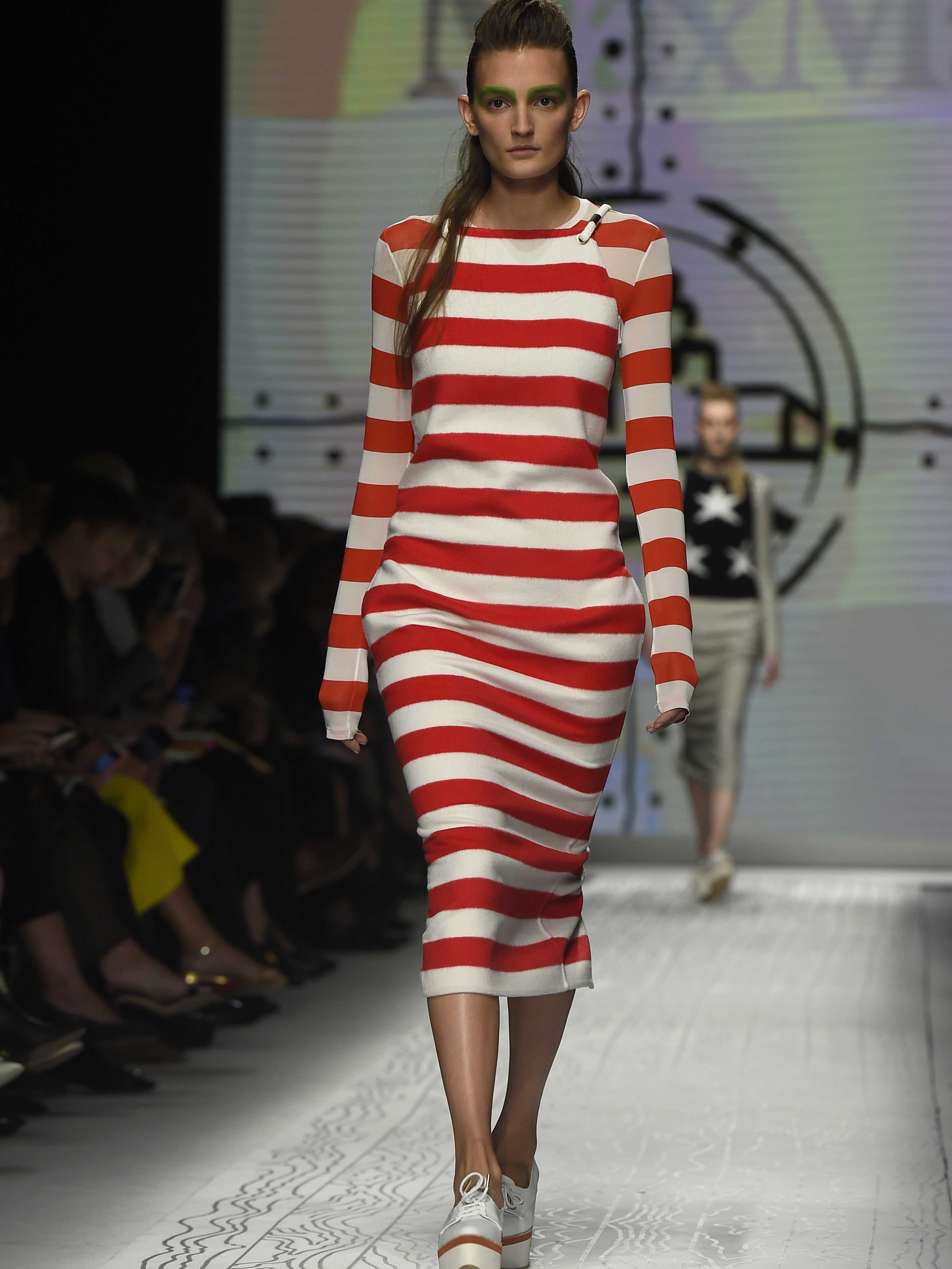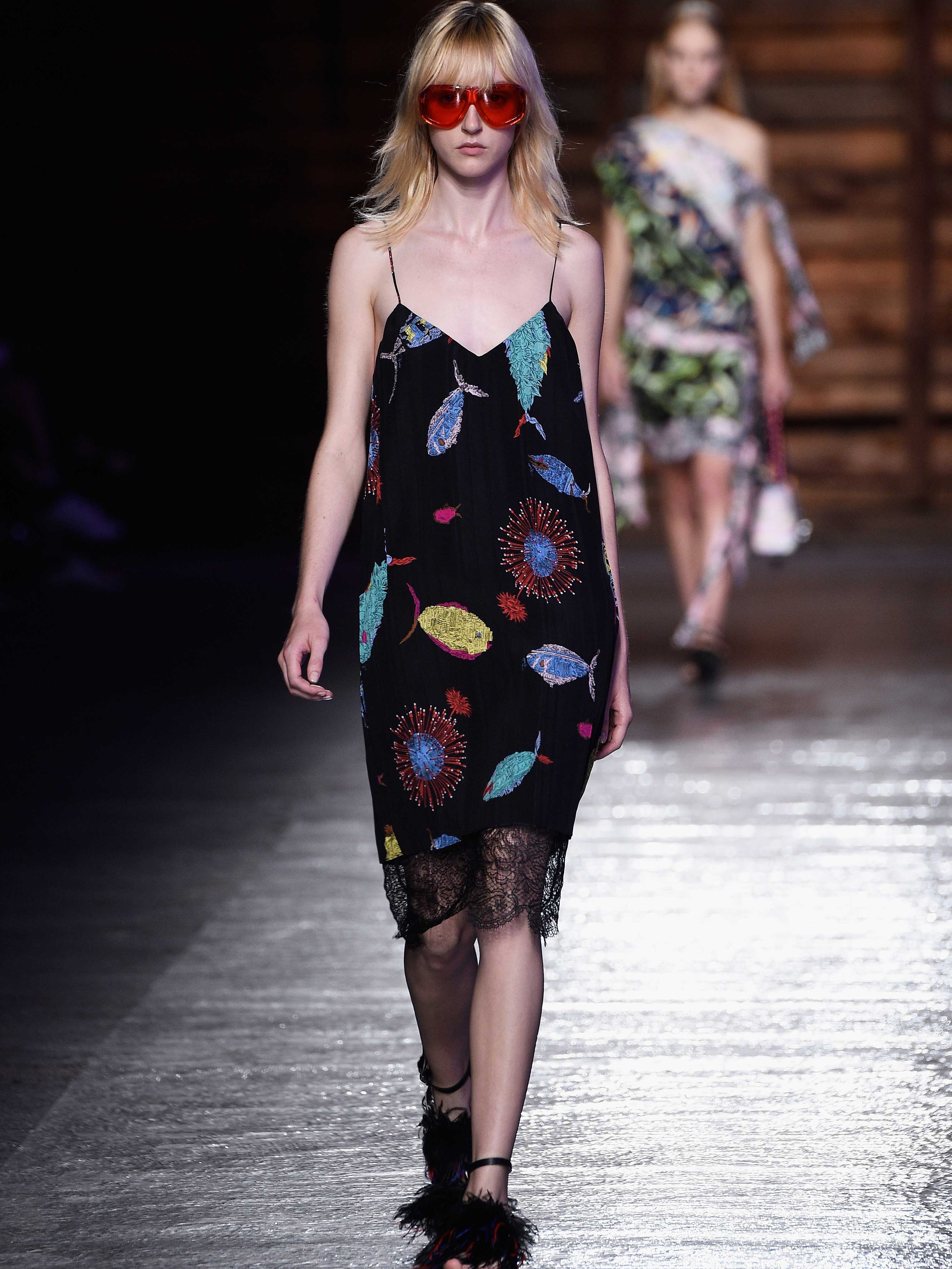Milan Fashion Week review: Fendi, MaxMara and Pucci
Smocks, sea and suspicious familiarity: From Milan’s spring collection, Alexander Fury probes designers inspirations for deeper meaning. And comes up wanting...

Inspiration in fashion is an odd, malleable thing. I frequently think that if a designer’s collection is good, I shouldn’t need to paw through show notes or rush backstage and desperately gouge a quote out of them. I should look at it, get it, and move onto the next. Even the most complex and complicated designers generally evoke a visceral reaction: of love it or hate it, first of all; then a feeling for what the show was trying to get at.
Some - like Miuccia Prada - try to dig deeper that mere surface. “The sophisticated person looks at everything,” she once said to me. “Someone who is superficial gets only the façade.” She was talking about consumers, but could have been chiding her fellow designers. She’s one of the few in the world qualified to do so.

Milan’s spring/summer 2016 shows have, generally, been floating on the surface when it comes to inspiration. MaxMara, for instance, whose models less walked a catwalk than a gangplank, in front of a rear projection of bobbing water behind portholes, to a soundtrack of gruff, horn piping sea shanties. Three guesses on the inspiration? Yep. A load of sea-men - Sinbad, Bluebeard, Jonah and the Whale. But you don’t need me to tell you that. The nautical tropes of striped sweater, pea jacket and rigging squiggling across prints or burrowing their way through drawstring collars and hemlines are fashion cliche, and MaxMara did nothing to rock the boat. But why would you? This was a tried, tested and slightly tired theme that was nevertheless deftly dealt with. Although you wonder if there’s really that much mileage left in the beautiful briny deep.
Fausto Puglisi also loves to clobber you with a reference - this time plenty of Greco-Roman gubbins, with drapey toga dresses, shell embroideries, intarsia knits of beefy gods tussling with mere mortals, the way his mere mortal models tussled with those clingy jersey skirts. Puglisi, however, has a strong colour sense (scarlet and lapis blue, violet against limoncello) and a strong sense of style, albeit distinctly moulded by some preteen exposure to Versace catwalk videos, apparently.
Karl Lagerfeld’s inspirations are rich, multi-faceted. They’re beyond the surface. Although, this season, surfaces were the focus: I dived backstage after this one because I was intrigued, and wanted to turn the clothes inside out and figure out how they were made, get under their intricately wrought smocking and inside the petals of the faux-rustic floral embellishments clustered over brief dresses and bag straps. Some dresses and skirts seemed almost plaited, like hunks of Heidi’s hair, exaggerated versions of the whip-stitch that edges many a Fendi bag. With its puffed bloomers and poured skirts and that whipcord lacing harnessing torsos, it was all a bit techno Tyrolean. Or as the stylist Charlotte Stockdale - who works on the collection with Lagerfeld - shouted out to me backstage: “Little house, big prairie!” That’s an emerging theme across many of the spring shows, that stitch-rich return to handcraft embodied in patchwork and puritan dresses. These clothes brought something fresh to those well-mined seams.

Massimo Giorgetti designs a young, uncomplicated line called MSGM which hasn’t created an enormous impact on fashion but has been hurrahed for injecting a dose of youthful exuberance into a Milan schedule that is often considered moribund and middle-aged. Perhaps thats why he was given the reins of the storied house of Emilio Pucci, a Tuscan marquis but a veritable prince when it came to prints, which was in need of something of a shake-up. If Giorgetti’s debut via static presentation back in June in the label’s home town of Florence was promising, his official debut on Milan’s calendar for spring/summer 2016 resolutely failed to deliver.
The inspiration behind Giorgetti’s Pucci collection seemed plain, but in a very different way to MaxMara. It was easy to tick off the collections Giorgetti had cast his eye over: a pinch of Christopher Kane, a dab of Gucci, a great glob of Loewe and Louis Vuitton, his fellow stablemates at LVMH. There was very little that felt new, except perhaps the audacity with which the barely-digested references were mixed together. Giorgetti has an engaging sense of feistiness to his own label, which was lamentably absent under the riffing and - lets be honest - ripping-off of other designers. This collection did a disservice both to his own talent, and to the name of Emilio Pucci. That sounds harsh, angry, especially when overriding feel of this collection was disappointment. The invite, of crafty, collaged feathers gaily mingling, was an exciting but ultimately misleading portent: a fashion show’s invite should not be its most inspiring feature. Nor its most original.
Join our commenting forum
Join thought-provoking conversations, follow other Independent readers and see their replies
Comments